The 20 plants listed below are garden favorites that are guaranteed to draw butterflies to your garden. At the same time, they’re excellent cut flowers that can be used as a single signature stem or included in a mixed arrangement, and usually the more you cut, the more flowers you’ll have. The secret to keeping your garden and your home looking good is to plant enough that the periodic clipping won’t decimate the garden while giving you enough blooms to fill your home. The secret to keeping butterflies coming back is to provide some shelter, some water and a spot for sunning — rocks are good. Both you and the butterflies can then get the most out of your garden.
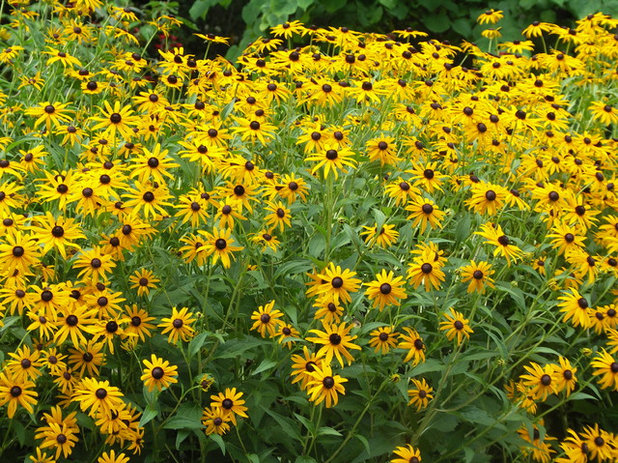
Earth Design, Inc.
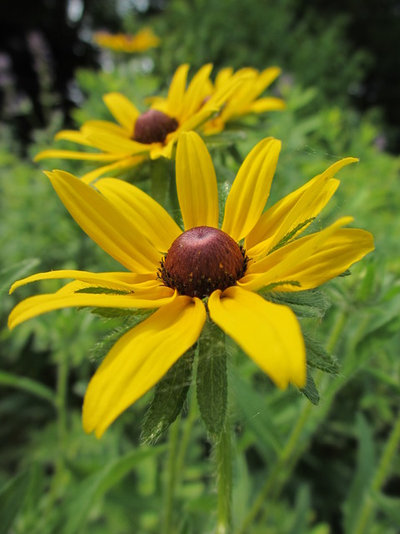
Benjamin Vogt / Monarch Gardens
Black-Eyed Susan(
Rudbeckia hirta)
Perennial, often grown as an annual
Black-eyed Susans, which may also be sold as gloriosa daisies, have made the move from being wildflowers to being the backbone of a late-summer perennial garden. The size can be 3 to 4 feet tall and about 1½ feet wide. They’re easy to grow, which is a bonus. Some of the most common varieties available are ‘Goldilocks’, ‘Indian Summer’ and ‘Prairie Sun’. Cutting them encourages increased blooms, so add them to bouquets throughout the bloom period.
Bloom season: Summer and fall
Cold tolerance: Hardy to minus 40 degrees Fahrenheit, or minus 40 degrees Celsius (zones 3 to 9); all zones for annuals
Origin: Eastern and central North America
Water requirement: Moderate to regular
Light requirement: Full sun
When to plant: Sow seeds in spring or set out plants in late spring to summer for most climate zones; sow seeds in winter in the warmest winter areas.
See how to grow black-eyed Susan
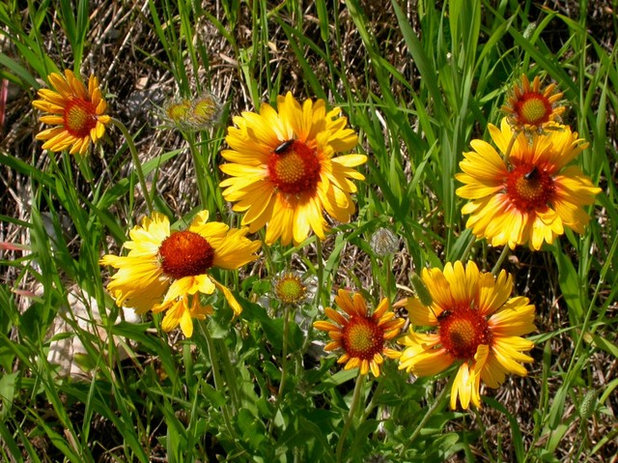
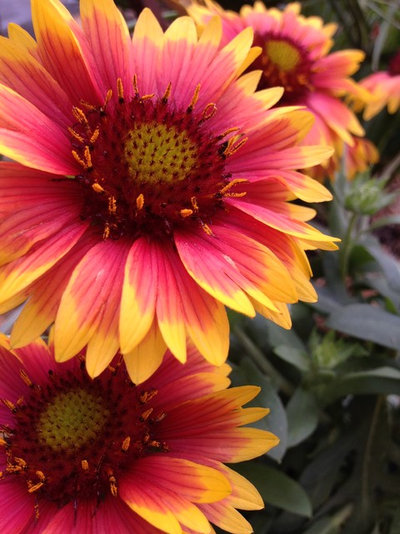 Blanket Flower
Blanket Flower(
Gaillardia spp.)
Perennial or annual
This brightly blooming plant will enliven a garden from early summer through frost, and cutting its flowers for bouquets will only increase the number of blooms.
Gaillardia x
grandiflora, a perennial hybrid, is the most commonly available and a favorite of butterflies. It reseeds readily and loves heat and soil that is not overly rich; it does need good drainage. Mass the blooms in a single vase or use in a mixed bouquet to add a rich background color.
Bloom period: Summer to frost
Cold tolerance: Hardy to minus 40 degrees Fahrenheit, or minus 40 degrees Celsius (zones 3 to 10); all zones for annuals
Origin: North and South America
Water requirement: Moderate
Light requirement: Full sun
When to plant: Start seeds indoors four to six weeks before the last frost date; sow seeds outdoors in late fall or early spring in warm-winter climates; set out container-grown plants in spring or fall.
See how to grow blanket flower
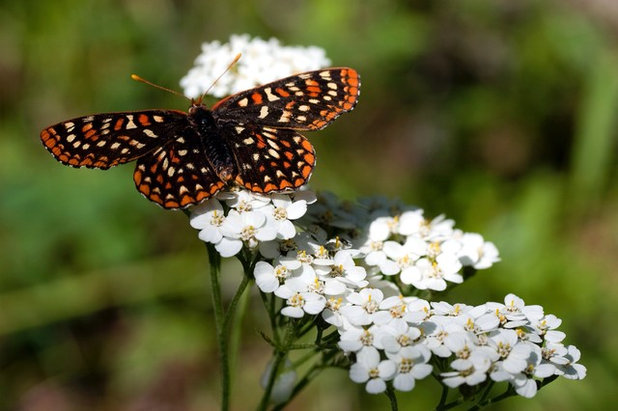
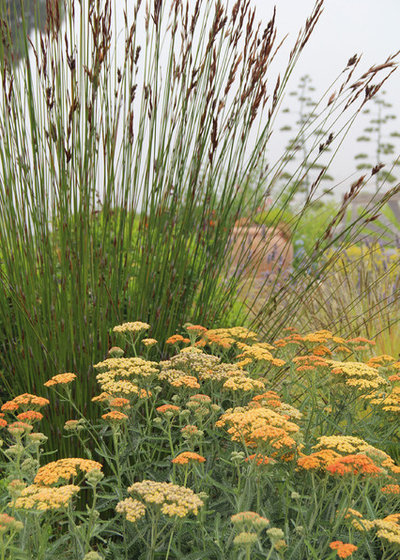
Bliss Garden Design
Common yarrow(
Achillea millefolium)
Perennial
Hardy and versatile, common yarrow is a low-water plant that is happiest in full sun and well-drained soil. The plants reach up to 3 feet in height. You can find colors from white and pink to orange, red, salmon and lavender. The hybrid
A. ‘Moonshine’ is another popular choice.
Use the flower clusters as a filler for bouquets and arrangements.
Bloom period: Summer to early fall
Cold tolerance: Hardy to minus 40 degrees Fahrenheit, or minus 40 degrees Celsius (zones 3 to 9)
Origin: Northern hemisphere, Asia, Europe and North America
Water requirement: Minimal to moderate
Light requirement: Full sun
When to plant: Start seeds indoors four to six weeks before the last frost date or sow seeds and set out container-grown plants in spring once the soil begins to warm.
See how to grow common yarrow
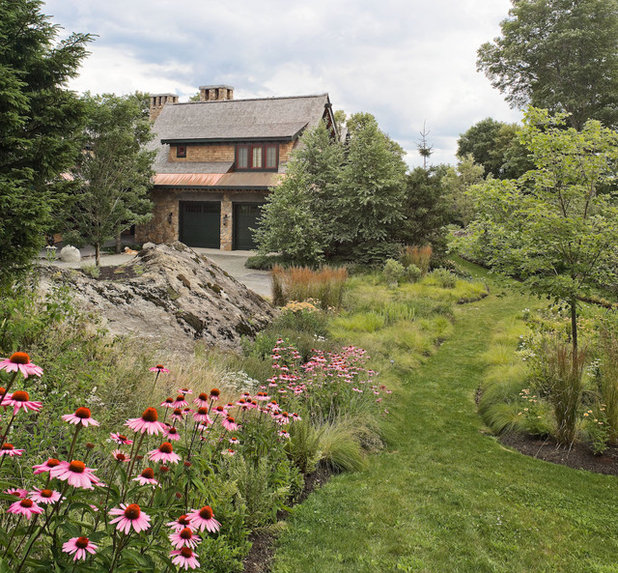
Wagner Hodgson
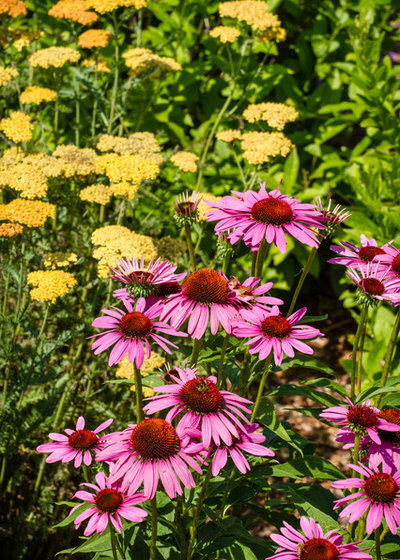
Ginkgo Leaf Studio
Coneflower(
Echinacea spp.)
Perennial
Long-blooming and hardy, these North American native perennials are increasingly popular, thanks to their general hardiness and good looks. They range in size from 1½ to 4 feet tall, with colors that range from white through orange and yellow to pink, green and purple. They often have a light fragrance as well and are favorites for mixed bouquets. Leave the spent flowers of the purple coneflower (
E. purpurea) in place in fall to provide food for finches.
Bloom period: Summer to frost
Cold tolerance: Hardy to minus 40 degrees Fahrenheit, or minus 40
degrees Celsius (zones 3 to 10)
Origin: Eastern and central United States
Water requirement: Moderate to regular
Light requirement: Full sun
When to plant: These do best with a little chill, so sow seeds in late fall and early spring; set out container-grown plants in spring.
See how to grow some less-familiar coneflowers
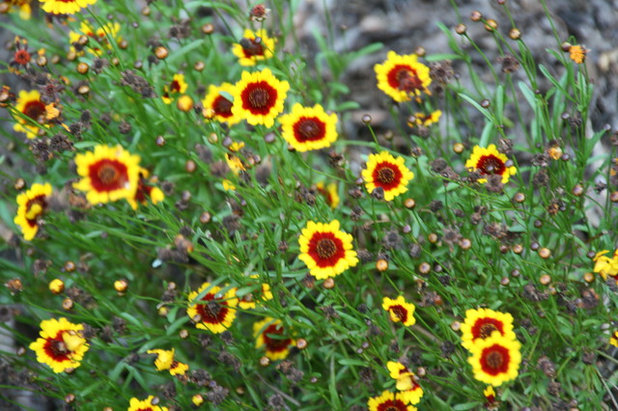
Gardening with Confidence®
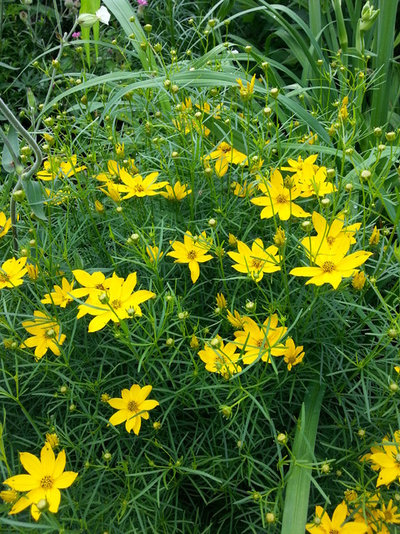
Rosborough Partners Inc.
Coreopsis(
Coreopsis spp.)
Perennials and annuals
A familiar garden staple, coreopsis, or tickseed, species are tough, easy to grow and fit into almost any garden. They generally reach around 2 feet tall and supply plenty of color throughout the growing season.
Coreopsis grandiflora is a popular choice, and a number of hybrids are becoming more and more available. These plants were once known solely for their bright yellow blooms, but the influx of hybrids means new colors have been added to the mix.
Cut and add to bouquets regularly to encourage repeat bloom. A mass of coreopsis is a good choice for color from the garden in spring when other flowering plants haven’t yet made an appearance; later in the season, tuck them in with other flowers in a mixed bouquet.
Bloom period: Late spring to fall
Cold tolerance: Hardy to minus 30 degrees Fahrenheit, or minus 35 degrees Celsius (zones 4 to 9) for perennials; all zones for annuals
Origin: North, Central and South America
Water requirement: Minimal to moderate
Light requirement: Full sun
When to plant: Start seeds indoors four to six weeks before the last frost date or sow outdoors in spring after the last frost; sow successively to lengthen the bloom period; set out container-grown plants in spring.
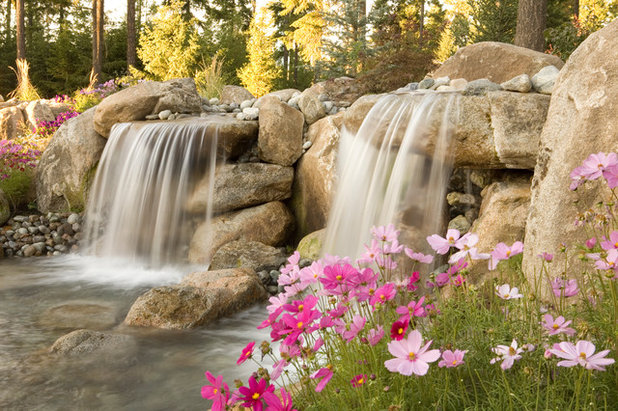
Alderwood Landscape Architecture and Construction
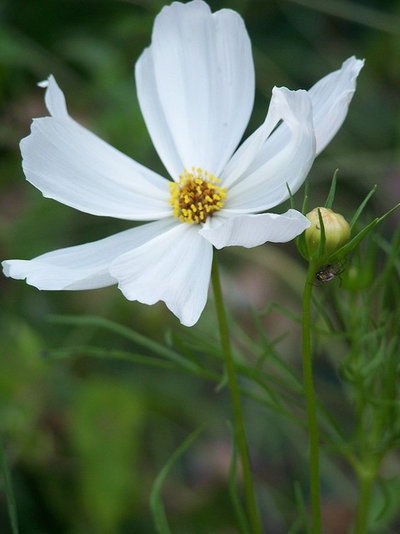
Lidia Zitara
Cosmos(
Cosmos bipinnatus)
Annual
These colorful annuals, most often found in shades of white, pink and lavender, are versatile garden additions, equally useful both as singular statement plants and massed together to create a colorful border or bed. Size ranges from 1½ to 8 feet tall. They self-sow readily and prefer slightly poor soil.
Cosmos are favorites for bouquets and arrangements, either alone or as part of a mixed arrangement. The Versailles strain in particular is a good choice for cutting gardens. When cutting blooms, choose flowers that have just opened and immediately put them into taller containers of cool water.
Bloom period: Summer to fall
Cold tolerance: Grown as an annual in all zones
Origin: Mexico
Water requirement: Moderate
Light requirement: Full sun
When to plant: Sow seeds or set out plants in spring and summer.
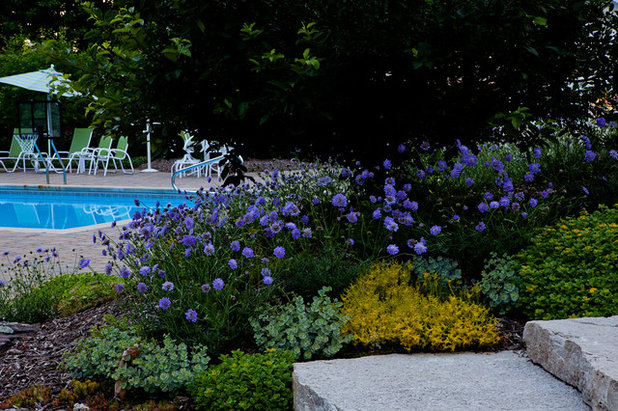
Blue Ridge Landscaping
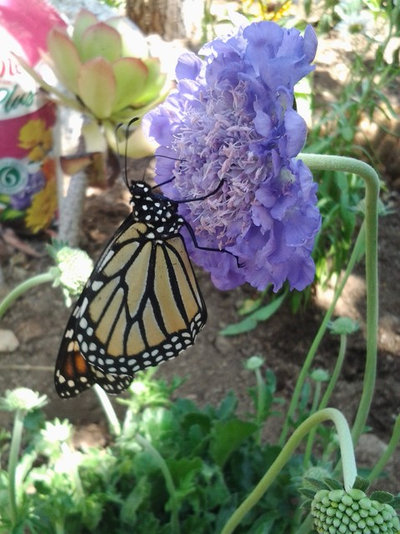
The Garden Natives
Dove Pincushions(
Scabiosa columbaria)
Perennial, sometimes grown as an annual
These smaller flowering plants provide season-long blooms in a perennial garden while doubling as a choice cut flower for flower arrangements. The plants reach about 2 feet tall, so plant near the front of a bed, where they can easily be seen. They do well both as accent plants throughout a mixed bed or massed together for a striking color display. ‘Pink Mist’ and ‘Butterfly Blue’ are favorite cultivars.
Bloom period: Early summer to frost; almost all year in warm-winter climates
Cold tolerance: Hardy to minus 20 degrees Fahrenheit, or minus 30 degrees Celsius (zones 5 to 9); grown as an annual in all zones
Origin: Africa, Asia and Europe
Water requirement: Moderate to regular
Light requirement: Full sun
When to plant: Start seeds indoors in early spring and transplant outdoors after the last frost date; set out container-grown plants in spring and fall.
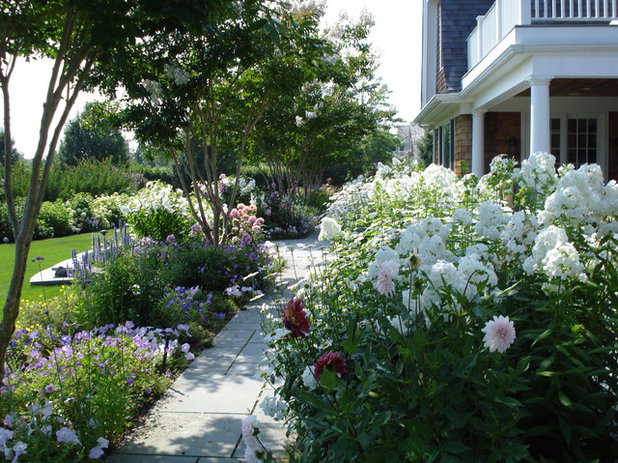
Lear & Mahoney Landscape Associates
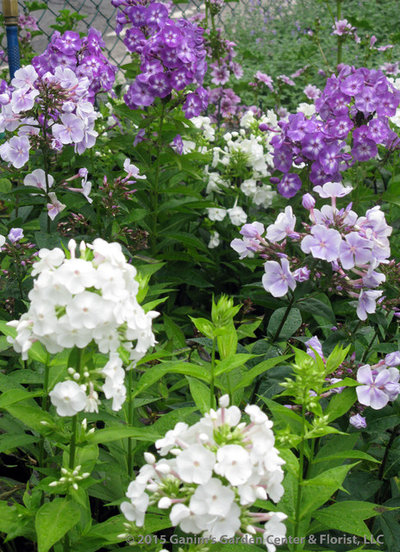
Ganim's Garden Center and Florist, LLC
Fall Phlox(
Phlox paniculata)
Perennial
Fragrant flowers top plants that range in height from 3 to 5 feet and add showy clusters of white to pink and purple to a garden or an arrangement. They’re susceptible to powdery mildew, so provide good air circulation and divide plants every few years. Mass blossoms in a single vase for a showy effect or add to a mixed bouquet for fullness.
Bloom period: Summer
Cold tolerance: Hardy to minus 30 degrees Fahrenheit, or minus 35 degrees Celsius (zones 4 to 8)
Origin: Eastern North America
Water requirement: Regular
Light requirement: Full sun to light shade
When to plant: Container-grown plants are the best choice, but you can start seeds indoors eight weeks before the last frost date; set out plants in spring and early summer.
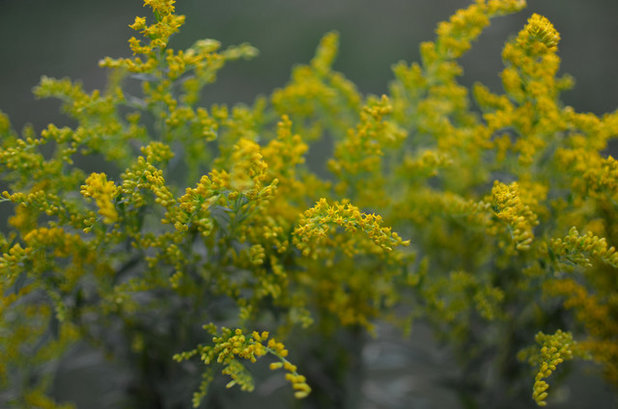
Amy Renea
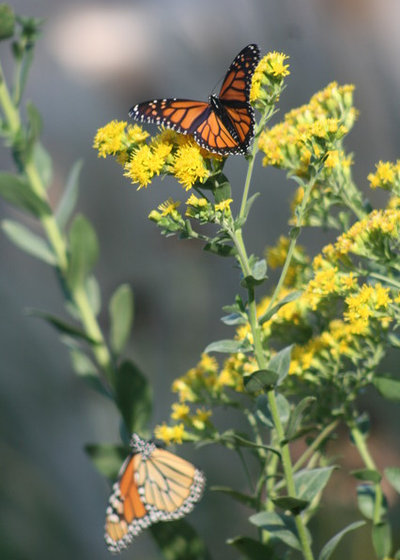
Benjamin Vogt / Monarch Gardens
Goldenrod(
Solidago spp.)
Perennial
Despite what you’ve heard, the golden blooms of the goldenrod do not cause hay fever. What they do excel at is providing an excellent addition to a casual cottage or meadow garden, and spikes of blossoms add interest, color and texture to any bouquet. Goldenrod can reach up to 4 feet tall, with the majority of plants being about 2 to 3 feet tall. They also do best in a poorer soil, so they’re perfect for hard-to-grow spots.
Bloom period: Midsummer to fall
Cold tolerance: Hardy to minus 40
degrees Fahrenheit, or minus 40 degrees Celsius (zones 3 to 9)
Origin: Primarily North America
Water requirement: Moderate
Light requirement: Full sun to light shade
When to plant: Start seeds indoors four to six weeks before the last frost date after 60 days of chilling and stratification; sow seeds or set out plants in spring or fall.
See how to grow goldenrod
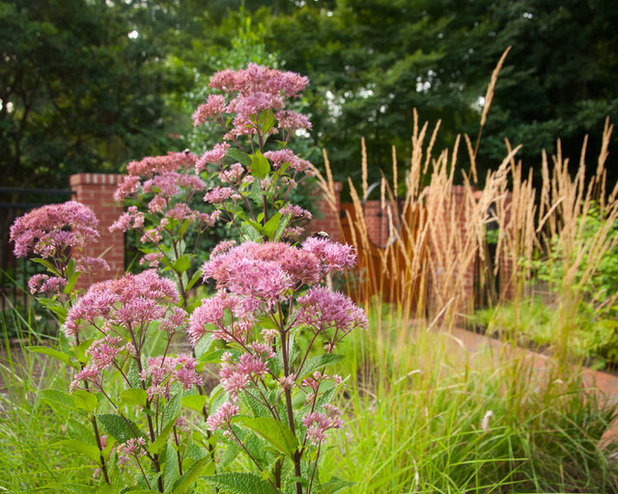
groundworks studio
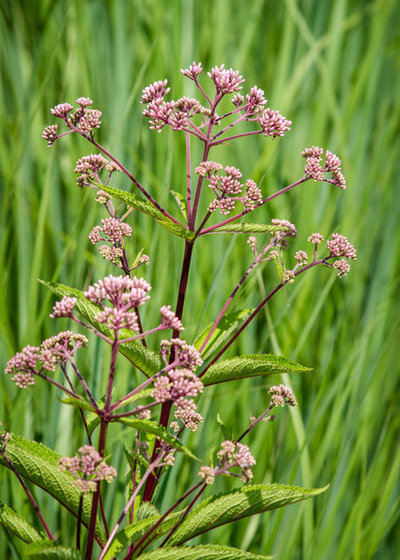
Ginkgo Leaf Studio
Joe Pye Weed(
Eutrochium purpureum; formerly
Eupatorium purpureum)
Perennial
These airy plants are a great addition to a natural or meadow garden. The most familiar species,
E. purpureum, can reach up to 9 feet tall; spotted Joe Pye Weed (
E. maculatum) is smaller. Purple or purplish-red is the most common flower color, but there is a white variety. They do best with rich soil that isn’t too acidic.
The lacy flowers are a good filler for a mixed arrangement. The leaves have a vanilla scent that is released when they are brushed against.
Bloom period: Late summer to early fall
Cold tolerance: Hardy to minus 30 degrees Fahrenheit, or minus 35 degrees Celsius (zones 4 to 9)
Origin: United States and Canada
Water requirement: Ample
Light requirement: Full sun to light shade in hottest areas
When to plant: Sow seeds or set out plants in fall.
See how to grow Joe Pye Weed
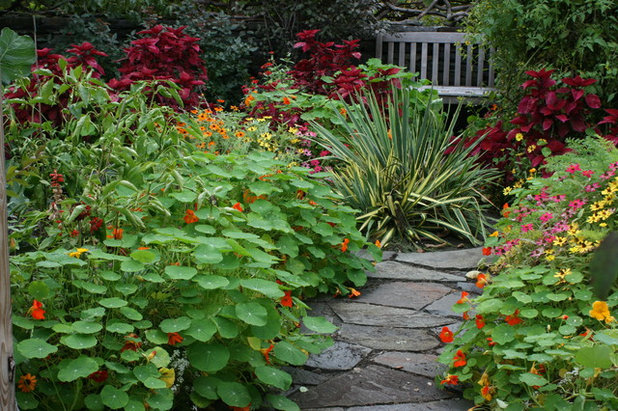
Bloom Landscape Design and Fine Gardening Service
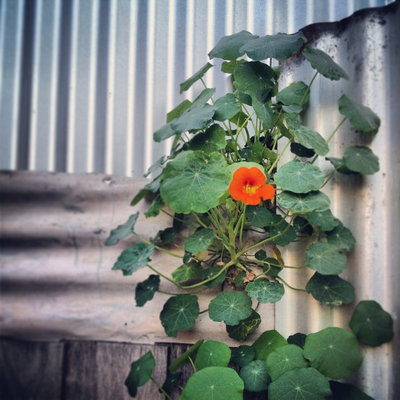
Seed Studio Landscape Architects
Nasturtium(
Tropaeolum majus)
Annual
Quick-growing nasturtiums are garden heavyweights. They can climb fences, cover trellises and garden sore spots, function as ground covers, edge a border or provide a quick hit of color to cover fading bulbs. Blooms in shades of yellow, orange and red are most commonly seen, but there are varieties with red, white and maroon flowers. Give them well-drained soil and provide water to get them established. They reseed easily. They may wilt in the hottest summer climates.
Nasturtiums do well as cut flowers, either on their own or tucked in with other blooms. As a bonus, add them to salads or use them to decorate a cake.
Bloom period: Winter through fall, depending on location
Cold tolerance: Grown as an annual in all zones
Origin: South America
Water requirement: Regular, though can take moderate water once established
Light requirement: Full sun to light shade
When to plant: Sow seeds in early spring in cold-winter climates; from fall to spring in warm-winter climates.
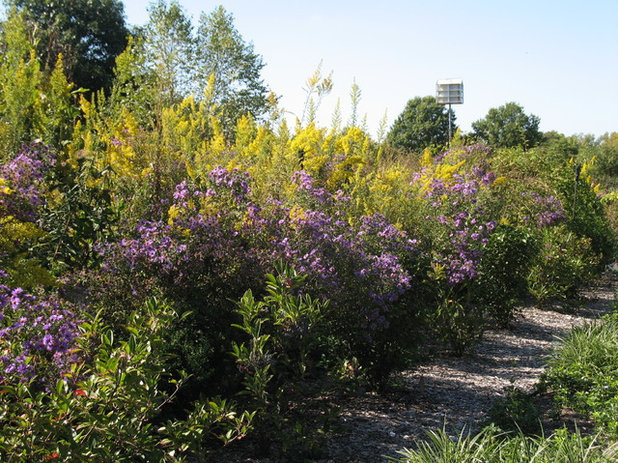
Missouri Botanical Garden
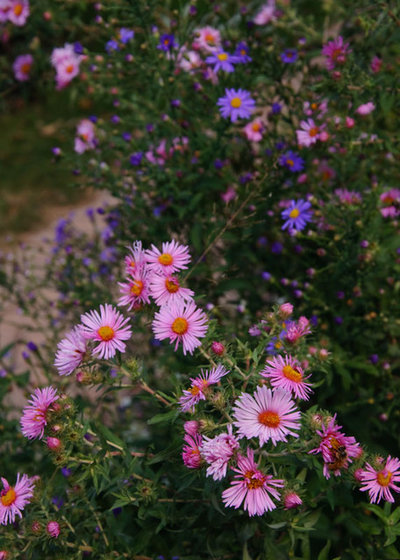
Barbara Pintozzi
New England Aster(
Symphyotrichum novae-angliae; formerly
Aster novae-angliae)
Perennial
These sturdy plants are a staple of the summer and fall garden. They can reach up to 5 feet tall and spread almost as wide. The standard color is violet-blue, but you can also find them in colors ranging from white, pink and red through various shades of blue and purple. They’re a good choice for adding a casual, country appeal to a bouquet or an indoor arrangement.
Bloom period: Late summer to early fall
Cold tolerance: Hardy to minus 45
degrees Fahrenheit, or minus 42
degrees Celsius (zones 2b to 8)
Origin: North America, east of the Rockies
Water requirement: Regular
Light requirement: Full sun to partial shade
When to plant: Sow seeds outdoors in early spring after the last frost; set out container-grown plants in spring and summer.
Learn more about growing New England aster
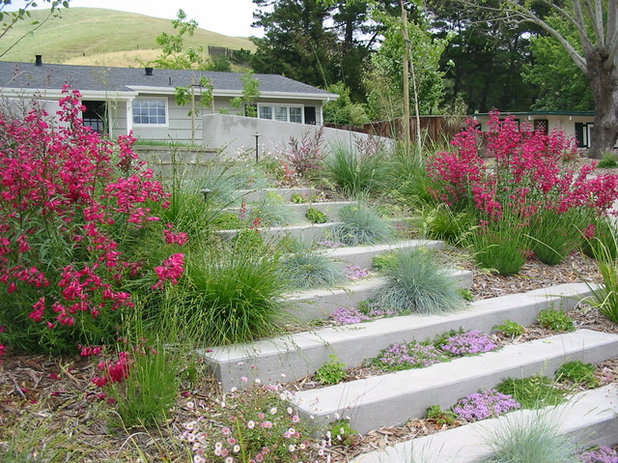
Huettl Landscape Architecture
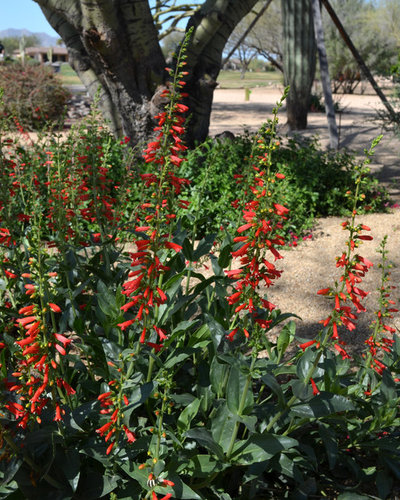
Noelle Johnson Landscape Consulting
Penstemon(
Penstemon spp.)
Perennials, often grown as annuals
These western North American natives do their best with little water and poor soil, as long as it drains well, and happily supply plenty of nectar to butterflies. Garden or border penstemons, which are hybrids, are often a better choice for gardens, as they can handle regular water but not soil that is too wet.
In the garden, plants may reach anywhere from 1½ to 4 feet tall, with a range of colors from white to purple. Their tubular flowers add little pops of color among other flowers in a mixed bouquet.
Bloom season: Spring to summer; cut back for repeat bloom
Cold tolerance: Hardy to minus 40
degrees Fahrenheit, or minus 40
degrees Celsius (USDA zones
3 to 10; find your zone); all zones for annuals
Origin: Western North America
Water requirement: Minimal to moderate
Light requirement: Full sun; provide shade in hottest climates
When to plant: In spring, start seeds indoors about four to six weeks before the last frost date or sow outside after the last frost when the soil starts to warm up; set out container-grown plants in spring after all danger of frost has passed and when the soil begins to warm up.
See how to grow several species of penstemon
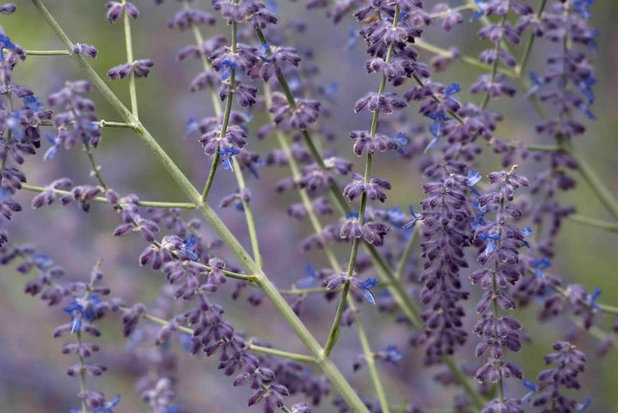
The New York Botanical Garden
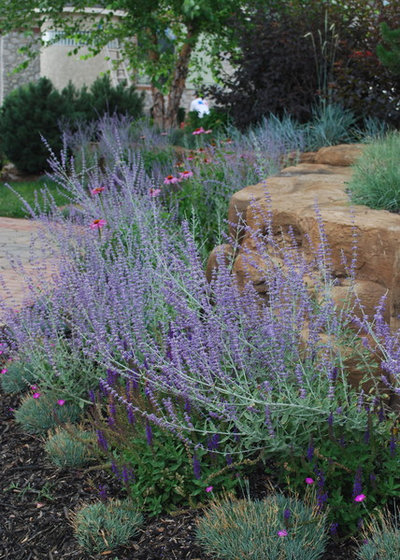
Jay Sifford Garden Design
Russian Sage(
Perovskia atriplicifolia)
Perennial
This shrubby perennial, which is not from Russia nor is it a true sage, has become an increasingly popular addition to the perennial garden. The sprays of bluish-purple flowers seemingly form a cloud above the gray-white stems. Russian sage is relatively hardy and can reach about 4 feet tall. Cut back in late winter or early spring before the plant sends out new growth.
The spiky, wispy flowers are good fillers for mixed bouquets.
Bloom period: Late spring to summer
Cold tolerance: Hardy to minus 20 degrees Fahrenheit, or minus 30
degrees Celsius (zones 5 to 9)
Origin: Central and southwestern Asia
Water requirement: Minimal to moderate
Light requirement: Full sun
When to plant: Set out container-grown plants throughout the growing season.
See how to grow Russian sage
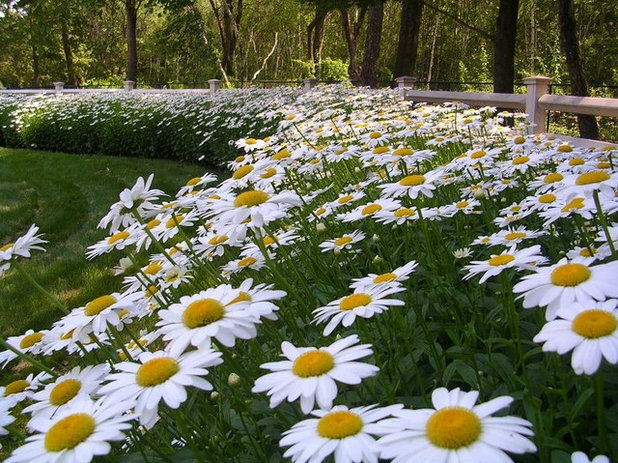
Elliott Brundage Landscape Design
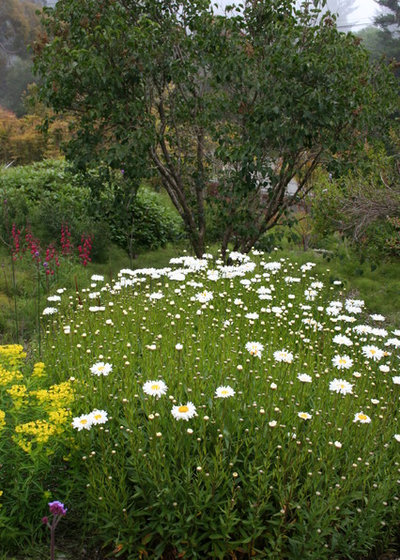
Genevieve Schmidt
Shasta Daisy(
Leucanthemum x
superbum;
syn.
Chrysanthemum maximum)
Perennial
A cottage garden basic, shasta daisies are known for their flat, white flowers with gold centers on plants that stand 2 to 4 feet tall and reach 2 feet wide. A quick check of garden centers and catalogs reveals a quickly growing number of varieties with petal shapes ranging from single to double and quilled to shaggy, sizes as small as 10 inches high and even some with yellow flowers.
They’re easy to grow if you provide moist, somewhat rich, well-drained soil and feed them both before and while they’re blooming. In very hot climates, you may need to provide light shade.
Mass them in the garden or mix them in with other perennials. Follow the same formula indoors; they’re fine as a single bloom in a container, used to create a massed effect or tucked in with other blooms of differing colors.
Bloom period: Summer (some begin blooming in spring or fall, or both)
Cold tolerance: Hardy to minus 20 degrees Fahrenheit, or minus 30
degrees Celsius (zones 5 to 9)
Origin: Luther Burbank hybrid from the 1890s
Water requirement: Moderate
Light requirement: Full sun
When to plant: Start seeds indoors four to eight weeks before the last frost date or sow seeds in early spring (plants may not bloom the first year); set out container-grown plants any time during the growing season.
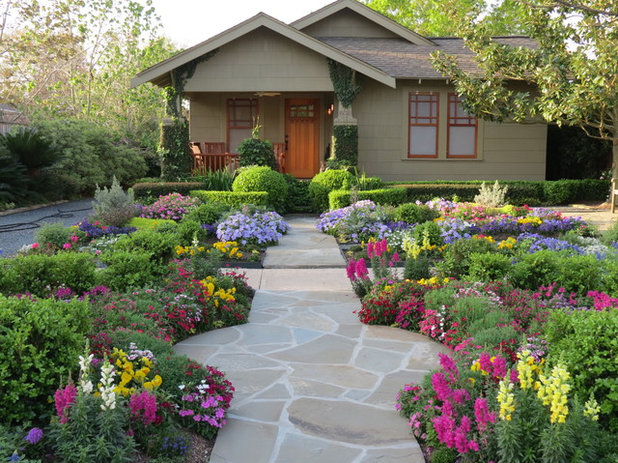
David Morello Garden Enterprises, Inc.
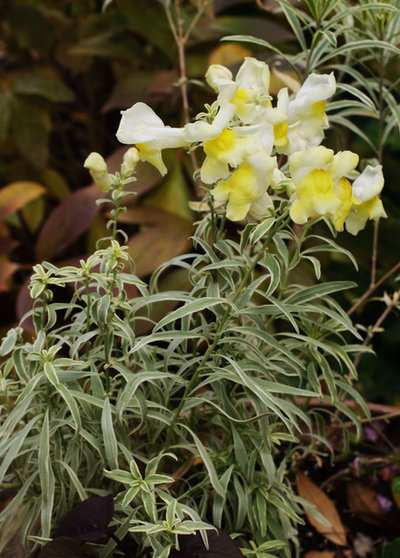
Barbara Pintozzi
Snapdragon(
Antirrhinum majus)
Perennial, usually grown as an annual
Snapdragons are old-fashioned favorites and ideal for spring garden borders, container gardens and indoor decorations. They’re also fun — who doesn’t enjoy pinching the flower’s sides and watching them snap open? Nurseries and garden centers offer a wide variety of options, from tiny (6 inches tall) to tall (up to 2 feet), shapes, and colors from white and pink to orange to maroon and purple.
Snapdragons’ architectural form makes them a match for everything from a traditional tabletop display to an accent in a contemporary design. Display in a simple vase or mix in with other flowers.
Bloom period: Winter and spring in warm-winter climates; spring and early summer in cold-winter climates
Cold tolerance: Hardy to 0
degrees Fahrenheit, or minus 18 degrees Celsius (zones 7 to 10); grown as an annual in all zones
Origin: Europe, North Africa and North America
Water requirement: Regular
Light requirement: Full sun
When to plant: Start seeds in flats in late summer and early spring, up to eight weeks before the last frost, to set out in fall in warm-winter climates and in spring elsewhere; set out seedlings and container-grown plants in early spring; they can take some frost.
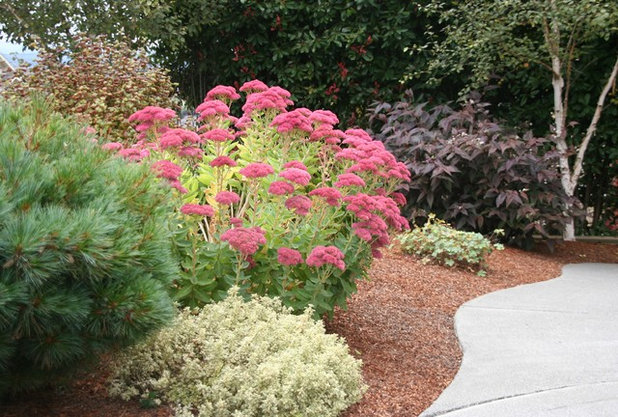
Genevieve Schmidt
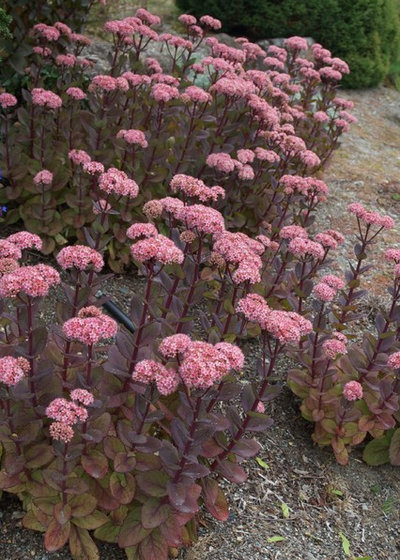
CYAN Horticulture
Stonecrop(
Hylotelephium spp.
and
Sedum spp.)
Perennial
While many sedums are better-known as ground covers, garden succulents and houseplants,
Hylotelephium spectabile (formerly
Sedum spectabile) and many hybrids of this species and
H. telephium (formerly
S. telephium) are go-to plants for their flowers rather than their leaves. ‘Autumn Joy’ is probably the best-known sedum, but others are gaining popularity.
The plants generally reach about 2 feet high and wide. Colors range from pink to rust. They’re a favorite choice for fall bouquets.
Bloom period: Late summer to fall
Cold tolerance: Hardy to minus 40 degrees Fahrenheit, or minus degrees Celsius (zones 3 to 9)
Origin: Eurasia
Water requirement: Minimal to moderate
Light requirement: Full sun to partial shade
When to plant: Sow seeds or set out plants in early spring or fall.
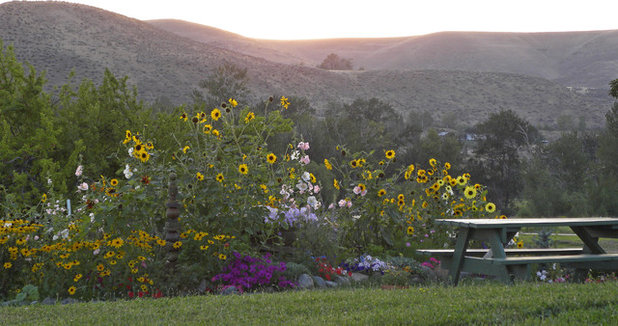
Sarah Greenman
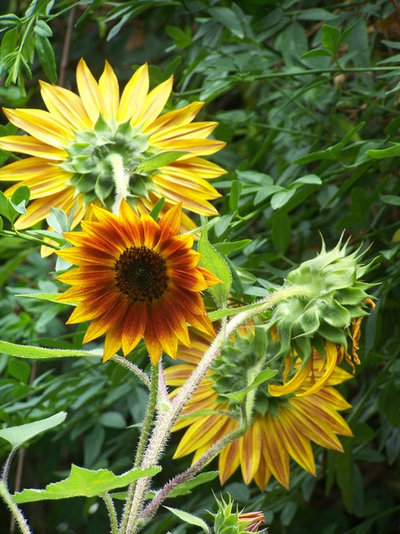
Lidia Zitara
Sunflower(
Helianthus annuus)
Annual
Summer and sunflowers just naturally go together, and they’re simply fun to grow. Traditionally, we think of sunflowers as tall with bright yellow petals and dark brown seeds in the center. These days, you can find them in all sizes, with colors from white to orange and a a mix of petal forms. The tallest varieties might need staking.
Sunflowers are also classic cut flowers. They’re equally at home in informal bouquets and edgier arrangements. If you’re planning to use them indoors, you may want to plant pollenless varieties that don’t shed.
Bloom period: Summer to fall
Cold tolerance: Grown as an annual in all zones
Origin: North America
Water requirement: Regular to ample
Light requirement: Full sun
When to plant: Sow seeds directly or set out plants once the soil begins to warm up in spring.
Learn more about growing sunflowers
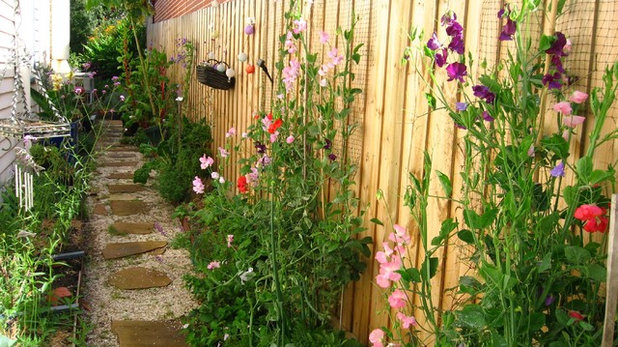
Gardens in Abundance
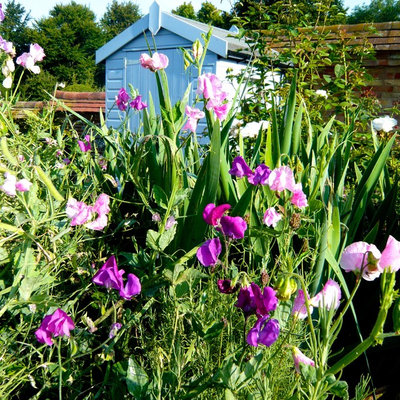
Joanne Alderson Design
Sweet Pea(
Lalthyrus odoratus)
Annual
These classic cottage garden flowers are known for their clusters of flowers and sweet scent. Colors range from white and cream to pinks, salmons, reds, blues, purples and bicolors. The vining types can reach up to 5 feet tall or taller, and will need support, while bush types generally reach only 3 feet and may or may not need to be staked. For best results, soak the seeds for several hours or overnight before sowing them. If you’re growing them in poor soil, dig a trench and add amendments before planting.
Show off sweet peas as a single cluster in a smaller vase or mass them for a fuller look. Take cuttings every few days to keep them blooming for as long as possible.
Bloom period: Winter through summer
Cold tolerance: Grown as an annual in all zones
Origin: Mediterranean region
Water requirement: Regular
Light requirement: Full sun
When to plant: Start seeds indoors six weeks before the last frost date or sow seeds in early spring or late summer; set out nursery-grown seedlings in early spring.
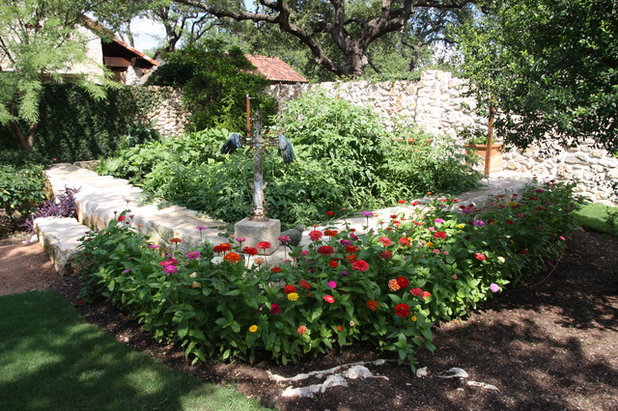
Rick O'Donnell Architect
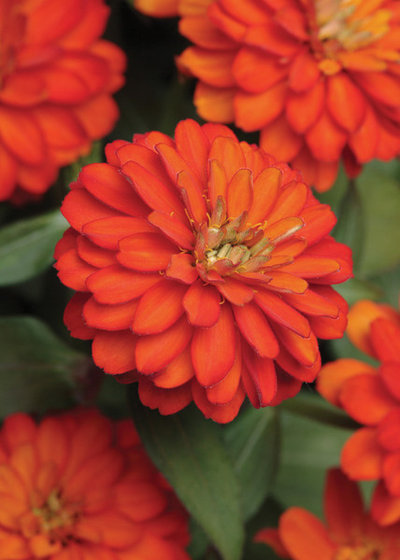
Burpee
Zinnia(
Zinnia elegans)
Annual
Zinnias thrive in the heat of summer, producing flowers in a variety of shapes and in colors ranging from white to pinks and reds to yellow, orange, lavender and purple. There is even a type with green flowers. Plant after the weather heats up, starting in late spring, and provide good soil and plenty of fertilizer. Plants can range in height from 1 foot to 4 feet.
Use them in bouquets and arrangements throughout the summer.
Bloom period: Summer to early fall
Cold tolerance: Grown as an annual in all zones
Origin: Mexico
Water requirement: Regular
Light requirement: Full sun
When to plant: Sow seeds or set out container-grown plants in late spring and early summer.
More:6 Steps to Creating Your Butterfly Garden
Attract Hummingbirds and Bees With These Beautiful Summer Flowers





